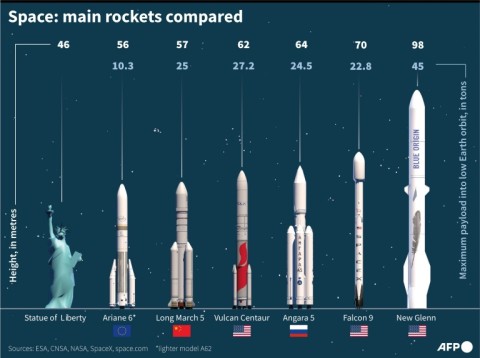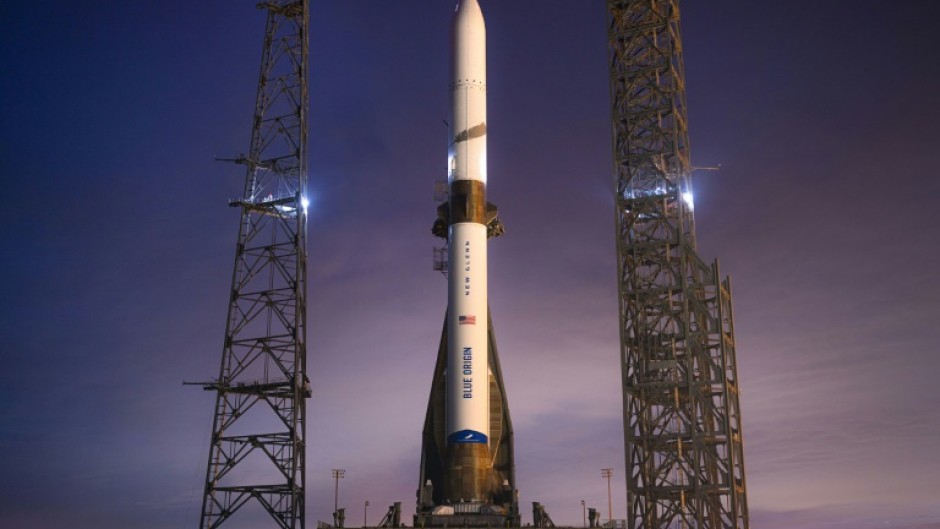WASHINGTON - A quarter century after its founding, Jeff Bezos's Blue Origin is finally ready for its maiden orbital voyage with a brand new rocket the company hopes will shake up the commercial space race.
Named New Glenn after legendary astronaut John Glenn, it stands 98 metres tall, roughly equivalent to a 32-story building, and is set to blast off from Cape Canaveral Space Force Station in a launch window that opens at 1am on Monday.
"Pointy end up!" the company's CEO, Dave Limp posted on X alongside photos of the gleaming white behemoth.
With the mission, dubbed NG-1, billionaire Amazon founder Bezos is taking aim at the only man in the world wealthier than him: Elon Musk, whose company SpaceX dominates the orbital launch market through its prolific Falcon 9 rockets, vital for the commercial sector, the Pentagon and NASA.
"SpaceX has for the past several years been pretty much the only game in town, and so having a competitor... this is great," G. Scott Hubbard, a retired senior NASA official, told AFP.
SpaceX, meanwhile, is planning the next orbital test of Starship -- its gargantuan new-generation rocket -- this week, upping the high-stakes rivalry.

Soon after launch, Blue Origin will attempt to land the first-stage booster on a drone ship named Jacklyn, in honor of Bezos's mother, stationed about 620 miles (1,000 kilometers) downrange in the Atlantic Ocean.
Though SpaceX has long made such landings a near-routine spectacle, this will be Blue Origin's first shot at a touchdown on the high seas.
Meanwhile, the rocket's upper stage will fire its engines toward Earth orbit, reaching a maximum altitude of roughly 12,000 miles above the surface.
A Defense Department-funded prototype spaceship called Blue Ring will remain aboard for the roughly six-hour test flight.
Blue Origin has experience landing its New Shepard rockets -- used for suborbital tourism -- but they are much smaller and land on terra firma rather than a ship at sea.
Physically, New Glenn dwarfs the 230-foot Falcon 9 and is designed for heavier payloads.
It slots between Falcon 9 and its big sibling, Falcon Heavy, in terms of mass capacity but holds an edge with its wider payload fairing, capable of carrying the equivalent of 20 moving trucks.

